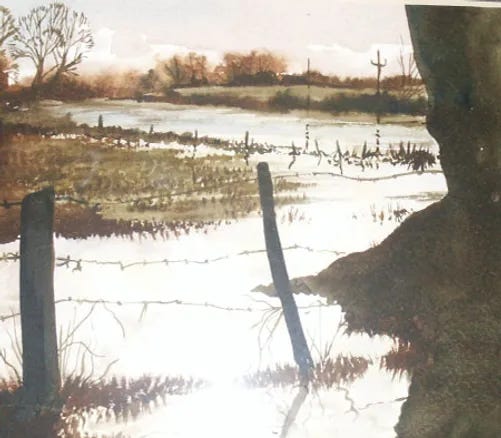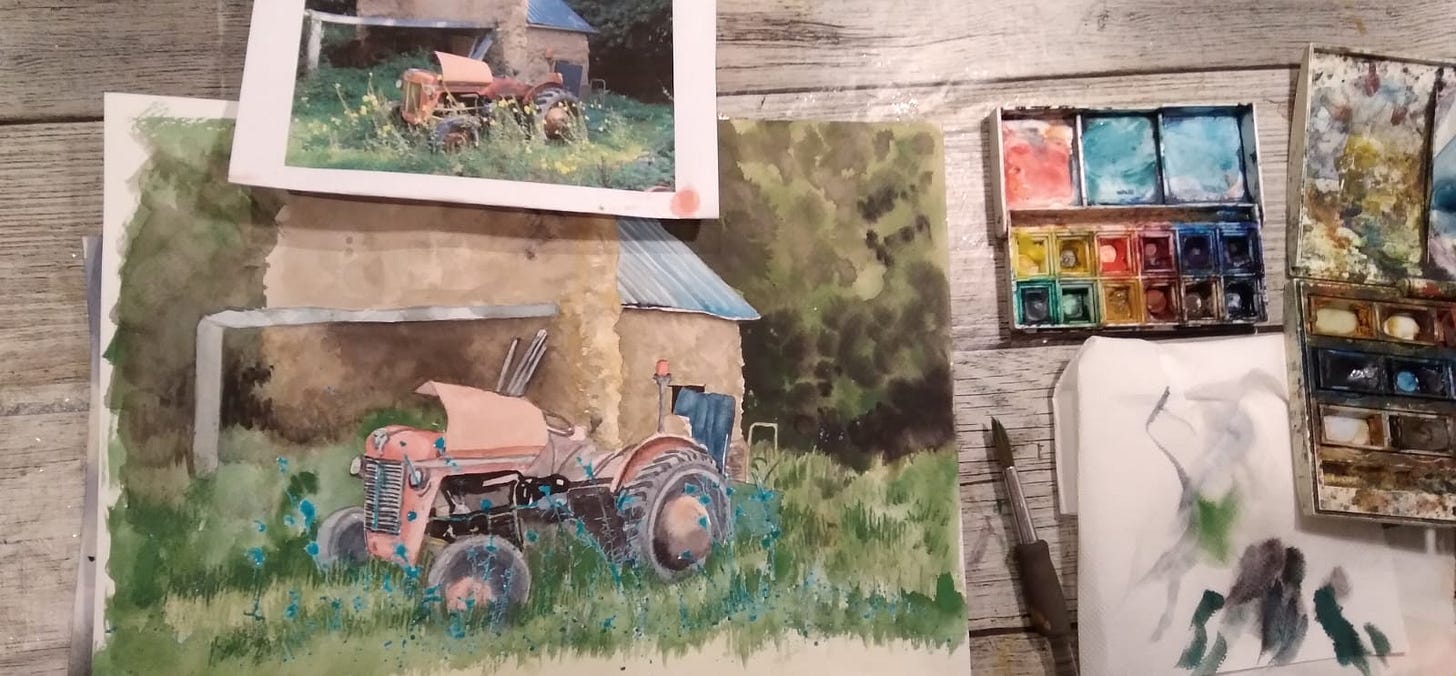How was your first week?
Did your observations help to focus your mind on a creative direction? Maybe you are juggling several potential projects or, perhaps your thought processes took you off on a tangent – if so go with it and see where it takes you.
Stage 2. Recording
Hopefully you have a collection of images and text to further develop but what is the best way to do this?
Experiment with media and techniques to discover what they add (or not) to the 'feeling' or sense of place/time/atmosphere of your work.
Materials
Consider the impact of the medium on your subject matter.
If you are working outside you'll want simple tools – a pencil, pen, stick of charcoal, soluble graphite, etc
For work at home you can explore colour and texture with paints, pastels, collage, inks, Brusho, coffee/tea, resists etc - and you have the opportunity to experiment with that stash of art materials you've never got around to trying!
Technique
Play! Your sketch book is the place for multiple tests, successes (to be developed into resolved pieces elsewhere), failures (a very important learning process!)and projects to be revisited. You should try everything and anything in your sketchbook!
Wax crayon (or candle) and ink are fun to use – good for big, bold marks.
Collage, torn paper, leaves, seeds, fibres etc offer a huge range of possibilities – feel free to tear your sketchbook pages too. Thicker paper gives a soft torn edge which can be employed effectively.
Use plant sap or berry juice (with caution!)or even soil/dust/clay mixed with water for very authentic work.
Mix up your media and see how it interacts.
Colour or black and white? How might that change your work.
Drawing – we'll look more closely at drawing styles and techniques as we progress.
Photograph and paste for future reference.
Don't forget to evaluate the pro's and cons of materials and techniques as you go.




